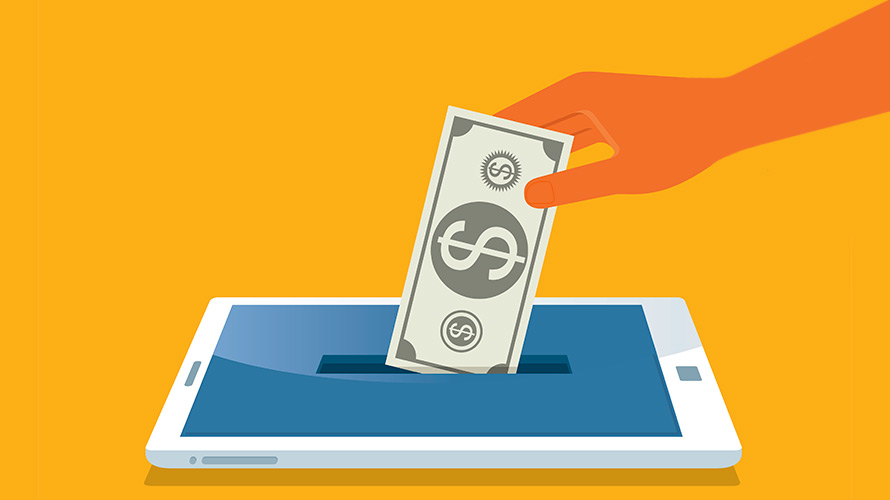IAB report shows 73% went to 10 companies
According to a new report from the Interactive Advertising Bureau, digital advertising in the U.S. totaled $72.5 billion in 2016, with the bulk of the money going to 10 companies.
Those stats come from the IAB’s internet advertising revenue report conducted by PwC. The total was up 21.8 percent from the $59.6 billion advertisers spent on U.S. digital advertising in 2015. Mobile accounted for 50.5 percent ($36.6 billion) of the total in 2016, up from $20.7 billion the year before.
“Mobile is the driving force in digital media and marketing throughout 2016, and that’s because of a simple reason: Consumers are on their phones, their mobile devices all the time, so marketers with their brand dollars are following them,” said David Doty, evp and CMO at the IAB.
Per the report, 73 percent of 2016 revenues during the fourth quarter went to 10 companies, down slightly from 75 percent in 2015. The IAB declined to name the 10 companies, but a report from eMarketer earlier this year estimated that Google and Facebook dominate digital spending, followed companies like Yahoo, Twitter, Snapchat and Amazon.
“Despite the emergence of a few heavyweights in internet advertising publishing, the concentration of top 10 revenues have remained relatively unchanged over the past 10 years, fluctuating between 69 percent and 75 percent,” the report states. Per the IAB’s estimates, about 31 percent of the growth in digital advertising during the fourth quarter of 2016 went to companies outside of the top 10 ad sellers.
“There has always been, since we started doing this, a concentration of dollars earned in a certain number of companies—that has been true in media’s history before digital,” Doty said. “Those top 10 companies will change. What we’ve seen, unlike what some people have reported, is that 31 percent of the growth is outside the top 10 in [the fourth quarter].”
The top 10 digital ad sellers are also setting the agenda for the biggest overall ad sellers, suggested David Silverman, a partner at PwC. “We’ve been tracking this for 20-plus years—those top 10 companies are very different now than they were 20 years ago. [Digital] is having not only a persuasive impact on who the top 10 digital companies are, but it’s who the top 10 media companies or tech companies or top 10 companies in general.”
Zeroing in on mobile, 47 percent of ad budgets went to search, while 38 percent went to banner ads. The remaining 15 percent went to video and other ad formats. Desktop and mobile contributed to a $9.1 billion video industry. And $16.3 billion went to social, up from $10.6 billion in 2015.
For the first time, digital audio is included in the report, making up $1.1 billion in revenue. And despite all the talk about the death of banner ads, display advertising contributed to $31.9 billion in ad spending in 2016.
“A lot of people talk about display having seen its better days, but in fact, total display is up 28 percent,” Doty said. “Banners alone are up 22 percent to $22.8 billion—banners account for nearly one in three internet dollars.”
Meanwhile, desktop search dipped from a $20.5 billion business in 2015 to $17.8 billion (equivalent to 24 percent of total spending) in 2016. Mobile search added another $14.5 billion, meaning that all search advertising contributed $35 billion in revenue.
Overall, retailers were the biggest advertisers, making up 21.3 percent of total ad spending. Financial services (13.3 percent) and automotive (12.5 percent) also were some of the heaviest advertisers, followed by telecom, travel and consumer-packaged goods.
Digital revenue accounted for $39.8 billion—or 55 percent of the total—in the second half of the year. That was up $7.7 billion from 2015. Within the fourth quarter specifically, digital advertising made $21.6 billion, up from $17.4 billion in the fourth quarter of 2015.
On a more granular level, the IAB reports that 64 percent of digital ads were priced on a performance model, while 35 percent of ads were bought using cost-per-thousand (or CPM) models last year. And 1 percent of ads were bought using a hybrid of both models.

